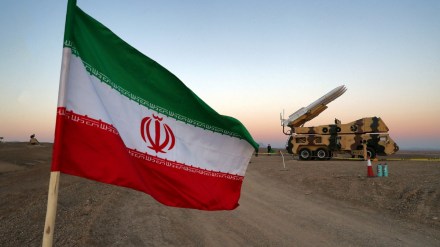Crude oil prices that slipped on Monday morning as the market drew down the risk premium, can see an escalation to the level of $95 per barrel or even $100 per barrel if the tensions between Iran and Israel does not cease soon. Analysts see the threat of deliberate supply cut by the Organisation of Petroleum Exporting Countries (OPEC) and Russia.
Prices of the benchmark Brent on the Intercontinental Exchange opened at $90.26/bbl on Monday morning, marginally down from its previous close of $90.45/bbl on April 12. However, analysts believe that the decline in crude prices may be short-lived and any further escalation can result in elevated prices.
“For near term to short term, there is a likelihood that we may near $100/bbl at least. Brent is already at $90/bbl, but WTI crude is at $85/bbl. So WTI going up by another $10/bbl looks very likely,” said Gnanasekar Thiagaranjan, Director, Commtrendz Research. “Not just because of the war development but also because supply is being curtailed consciously. All this will most likely take us near $95/bbl or close to $100/bbl,” he said.
On April 13, Iran launched over 300 drones and missiles at Israel in retaliation to a strike by Israel on its consulate in Syria earlier this month. The former has warned that it will strike again with greater force if Israel or the United States (US) retaliate against the recent drone attack. As per analysts, any further escalation can tune back in the high risk premiums to crude prices.
“Whenever there is any geopolitical disruption, a speculative risk premium gets added to the prices,” said an analyst who did not wish to be identified.
Following the Iranian attack on April 13, the weekly Geopolitical Risk Index increased to 1.35 during the second week of April (April 7-April 13), the highest level since the start of the year, noted Jorge Leon, senior vice-president at Rystad Energy. “Moreover, when focusing only on the last 2 days (13 April and 14 April) the Geopolitical Risk Index jumped even further, to 1.41,” he said in a note.
As per calculations by Rystad Energy, the ‘fair value’ of Brent for the month of April is at around $84 per barrel based on the demand and supply fundamentals. “That means the 10% increase we saw last week can almost entirely be attributed to the ongoing conflict,” Leon highlighted. “The implications for the oil markets would be very significant.”
Moreover, Iran has emerged as a key contributor to the world oil supply with its production increased by almost 20% to 3.4 million barrels per day in the last two years. This contributes to roughly 3.3% of the world supply.
“The news of Israel preparing for a potential Iranian attack has spooked the market, leading to concerns about potential disruptions to oil supply and keeping the prices elevated,” said Amit Goel, Co-Founder & Chief Global Strategist, Pace 360.
He noted that oil prices already reflected a $5-$10 per barrel risk premium from the downside risks to supply even before the Iranian attacks. “Thus, a higher geopolitical risk premium may result if the market priced a greater likelihood of decreased Iran supply,” Goel said.
As per Thiagaranjan, the market “might be inclined” to test around $95 per barrel price for crude oil owing to the heightened fears of supply issues. “They (Israel) might block all (Iranian) vessels. These kinds of threats would be there which may push Brent to higher range. A $100 per barrel price might not be inevitable.”
India imports almost 88% of its crude oil requirements. Any significant rise in the global crude oil prices can further pose a threat to the country’s import bill which has so far remained low owing to the discounts offered by Russia. India imported $120.85 billion worth of crude oil during April to February in FY24, according to latest data by Petroleum Planning and Analysis Cell. In FY23, the country’s crude oil import bill stood at $157.53 million.
